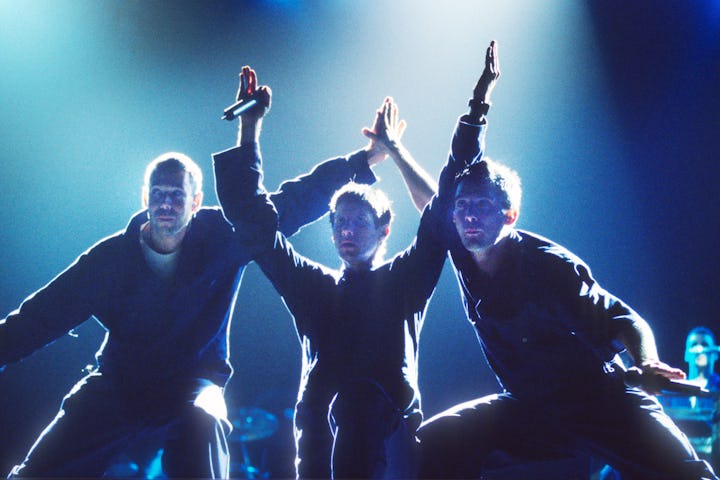25 Years Ago, One Album Redefined Rap And Rock At the Same Time
Remember when the Beasties went “Intergalactic?”

When the Beastie Boys released Hello Nasty on July 14, 1998, it was simultaneously a return to their roots as well as a reinvention. The quintessentially New York trio left the Lower East Side following the success of their 1986 debut studio album License To Ill and spent the better part of the next decade in Los Angeles. Was that the secret to the success of this now twenty-five-year-old groundbreaking album? Unclear. But now, a quarter-century after its release, Hello Nasty is basically a turning point for the ‘90s, and rock and rap. Even though we didn’t know it at the time.
The three albums that group members Michael "Mike D" Diamond, Adam "MCA" Yauch, and Adam "Ad-Rock" Horovitz released during that period tended to reflect the frat-boy life they were living in LA. And while the group started recording Hello Nasty in California, the album’s creation would eventually make its way to New York when MCA headed back east, and the rest of the group eventually followed.
The Beastie Boys in 1998.
That physical migration back home correlated with a return to the Beastie Boys’ classic hip-hop roots. While the group started as a punk band, License To Ill was the first rap LP to top the Billboard album chart and was the second rap album to achieve platinum status. In an era of enormous rap supergroups like Puff Daddy & The Family, Wu-Tang Clan, and The Flipmode Squad, the Beastie Boys veered hard into a tighter and more old-school rap vibe.
The shift was never more apparent than on the track “Three MC's and One DJ,” where fans were introduced to the group's new contributing member Mix Master Mike who scratched records on the track and also appeared in the music video, which happened to be shot in the same basement at 262 Mott Street in the Little Italy neighborhood of Manhattan that much of the album was recorded in.
But the Beastie Boys also incorporated new sounds into their music on Hello Nasty. MCA was influenced heavily by Brazillian Bossa Nova artists like Jorge Ben and Antonio Carlos Jobim and folded those influences into Hello Nasty. As MCA shared in the liner notes for the band’s 1999 anthology album The Sounds Of Science:
“At some point when I was listening to Jobim’s ‘Aguas De Marco,’ I decided that I wanted to write and record a couple of Bossanova songs. I guess that’s kind of like saying, ‘I was watching Michael Jordan play basketball, and I decided that I want to play for the Bulls.’”
The musical smorgasbord that is Hello Nasty was well-received, even if people couldn’t entirely make sense of the album. It topped the Billboard 200 album sales chart by selling 681,000 copies in its first week. In what would become a masterclass in genre-bending, “Intergalactic” — the album’s biggest single — picked up a Grammy for Best Rap Performance by a Duo or Group, and the album itself won a second Grammy for Best Alternative Music Album.
Because the Beastie Boys had already achieved massive success prior to Hello Nasty, it would be overstating the point to call the album a “glow-up.” But it certainly marked a more grown-up version of the group, as evident in lyrics throughout various tracks. Largely gone are juvenile references to beer and girls, replaced with rhymes about boardgames as Ad-Rock sounds incredibly witty and cool while rapping, “Well I'm the king of Boggle, there is none higher/I get eleven points off the word 'quagmire'” on the track “Putting Shame in Your Game.”
That is not to say the Beastie Boys left all their juvenile humor behind. There was still plenty of boy in the Beastie, as witnessed by Hello Nasty’s album title. It can be traced back to the receptionist at the band’s publicity firm Nasty Little Man, who would allegedly answer the phone with the greeting "Hello, Nasty," which to this day is still good for a laugh. But, the legacy of Hello Nasty isn’t a joke. Your record collection couldn’t exist without it, and everything changed after this moment.